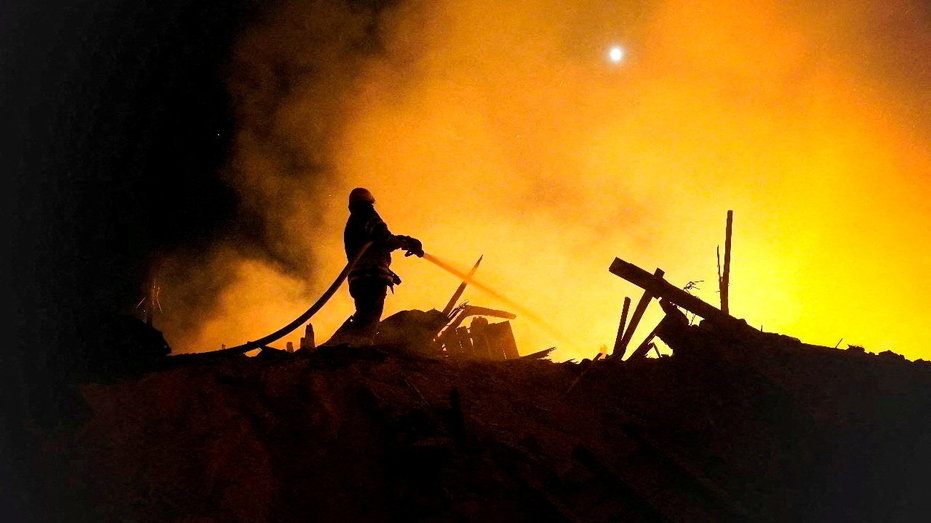
Explosions shook the early morning sky as Ukraine’s air defenses repelled a Russian attack on Starokostiantyniv, a city housing a critical air base and a frequent target of Moscow’s strikes.
Hours after the assault, the city’s streets had mostly returned to normal.
However, the June 27 attack served as a stark reminder of the challenges Kyiv faces as it rebuilds its depleted air force and prepares to deploy the first F-16s – fighter jets Russia will be determined to disable or destroy.
The first F-16s are anticipated to arrive this month, and Ukraine hopes they will strengthen forces battling to push back against Russia’s offensive along the front lines, which includes devastating glide bombs that the F-16s could potentially disrupt.
Authorities have not revealed where the F-16s will be stationed, but Moscow claimed after the strike on Starokostiantyniv last Thursday that it had targeted airfields it believed would house them.
The air base has been subjected to frequent attacks since the start of Russia’s invasion in February 2022, including from drones and hypersonic missiles.
Residents of this historic military outpost of around 30,000 people, nicknamed Starkon, in Ukraine’s Khmelnytskyi region have become accustomed to the constant threat.
“In short, it’s ‘fun’ to live here,” said city official and local culture expert Vasyl Muliar with a wry smile, speaking after the recent attack.
A Ukrainian air force spokesman acknowledged that the strikes posed “certain difficulties”, but insisted they would not impede the delivery or use of the F-16s in battle.
Separately on Tuesday, Russia’s defense ministry announced that it had destroyed five Ukrainian SU-27 fighter jets at Myrhorod airfield in Poltava region. Ukraine disputed the claim, deeming it exaggerated.
Military analysts suggest that the Russians were likely targeting air base infrastructure like runways and storage facilities to make it more challenging to launch F-16s, and to target the Western jets themselves once they arrive.
With limited air-defense ammunition, the Ukrainian military is also likely to be forced to relocate the valuable aircraft between airfields, said Justin Bronk, of the Royal United Services Institute.
“Any ground-based air defense coverage can be saturated if the Russians care enough to fire enough missiles at one target,” he said.
Following last Thursday’s attack, Governor Serhiy Tyurin reported that air defenses had destroyed nine targets over his region. Shortly before the attack, the air force had warned residents of approaching drones headed toward Starokostiantyniv.
Local residents, cautious not to disclose potentially sensitive military information, described their lives under the threat of strikes and amidst the frequent roar of Ukrainian warplanes in the skies above.
Iryna Sapchuk, editor-in-chief of local newspaper Our City, shared that her parents’ home had been damaged in a previous raid, resulting in a damaged roof and shed.
“They found debris from a missile in a cherry tree by the window,” she added.
As in many other towns and cities across Ukraine, people displayed a strong sense of resilience despite the danger and inconvenience of frequent power outages caused by Russian attacks on the energy system.
Road works continued as jets soared overhead, while families and groups of teenagers sought relief from the heat at the local beach.
When traveling around Ukraine, Sapchuk admitted finding it difficult to adjust to life without the sound of airplanes.
“It’s too quiet for me,” she joked, adding that the noise had become a reassuring sign that Ukraine’s outnumbered pilots were putting up a fight.
Muliar, the local official, pointed to the city’s history as a 16th-century stronghold of defense and, centuries later, a key nerve center for independence fighters of the nascent Ukrainian People’s Republic after World War One.
“This was always a center of resistance.”